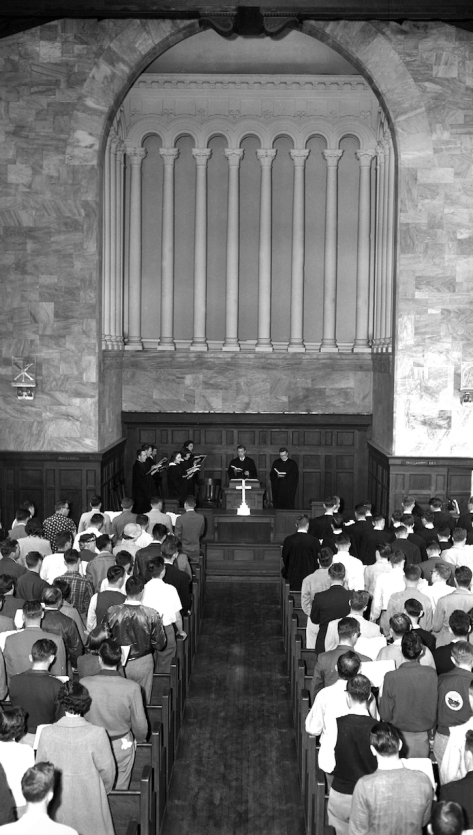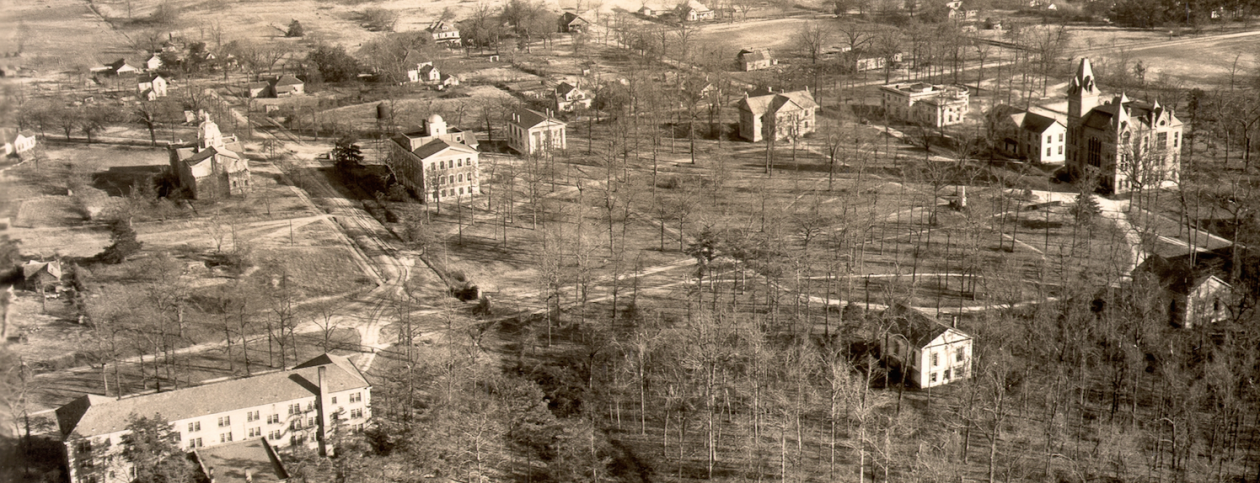In an earlier chapter of my life, I worked for three years as the reference librarian in the Pitts Theology Library at Emory. The building fascinated me almost as much as the gargantuan collection of books, one of the finest assemblages of theological materials in the country.
Built in 1916, the Old Theology Building, as it is now called, is undergoing a renaissance. Part of the makeover includes its name. For sixty years it was simply the Theology Building, then for another forty the Pitts Theology Library. With the move of the Candler School of Theology into the Rita Ann Rollins Building in 2009 and the transfer of Pitts into new quarters in 2014, the heavily worn and now empty building became simply “Old Theology.”

Designed by the great Beaux Arts architect Henry Hornbostel, the Theology Building was half of a pair of twins that comprised the only academic buildings on the new campus in 1916. (The other was the Law Building, now Carlos Hall, which mirrors Theology.)
The building was both elegant and spare. Hornbostel’s sweeping staircase had little ornamentation, and the entrance foyer was minimalist.

On the other hand, the wood-paneled office of Chancellor Warren Candler–later the theology dean’s office and then the theology librarian’s–had a marble fireplace that is being restored to working order with gas-burning logs.

Amazingly, work crews stripping away old drywall this summer uncovered a long-forgotten fireplace below the chancellor’s office. This, too, will be restored to working order.

In the early years, the building served as a kind of attic for the University. Whatever they didn’t have room for elsewhere went into Theology. When Emory College moved from Oxford in 1919, the college dean had his office in Theology briefly, and the college library was squeezed into the basement until the Asa Griggs Candler Library was built in 1926.
For most of its life, the building served the theology school as library, offices, classrooms, and chapel.

Then, in 1974, Emory acquired a 220,000-volume collection of rare books being sold by the Hartford Theological Seminary, and the entire building was made into the Pitts Theology Library. Paul Rudolph, dean of the Yale School of Architecture and son of the first graduate of Candler School of Theology, redesigned the interior of Old Theology to incorporate steel mezzanines in all the rooms, and fill the space with shelves. The chapel became a book-filled reference room.




In many ways, the restoration of the building will accomplish what Henry Hornbostel may have intended by his original design–a work that pays homage to the past through its neoclassical revival, while making room for engaging the present and preparing for the future. Fitted with high-tech digital capabilities, the restored building will also preserve the ornamentation and whimsical touches of its creator.


When it reopens sometime in 2019, the Old Theology Building once again will be a shining jewel on the Quadrangle.
Gary Hauk

Very interesting!
LikeLike
Sounds like a most worthy project. I assume a major donor is making it possible.
Martin
On Wed, Nov 8, 2017 at 8:49 AM, Emory Historian’s Blog wrote:
> emoryhistorian posted: “In an earlier chapter of my life, I worked for > three years as the reference librarian in the Pitts Theology Library at > Emory. The building fascinated me almost as much as the gargantuan > collection of books, one of the finest assemblages of theological mat” >
LikeLike
There’s still time to make the Martin Lehfeldt Building!
LikeLike
Very glad to see this magnificent historic building in the heart of campus get a new lease on life!
LikeLiked by 1 person
Gary, your writing is elegant prose, bringing back to life bygone days. Thank you. Let’s have lunch and catch up. Regards, Brad Currey
LikeLike